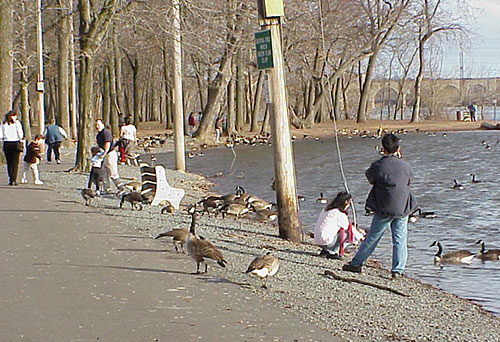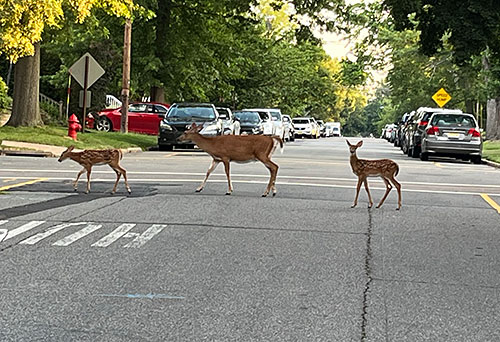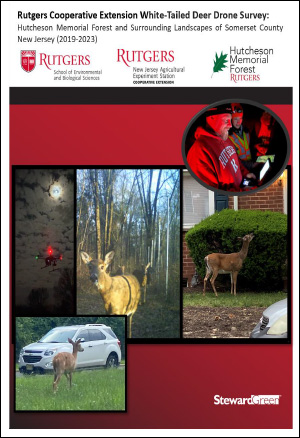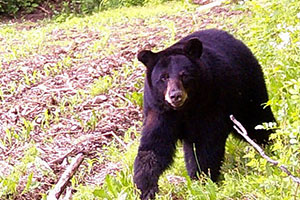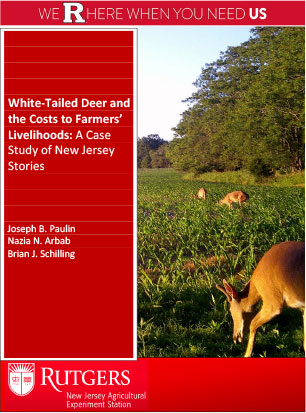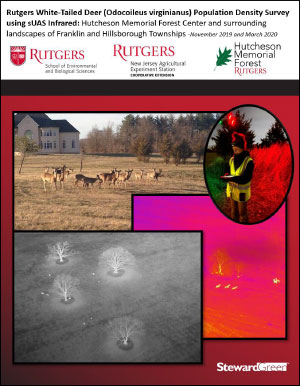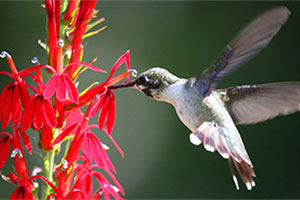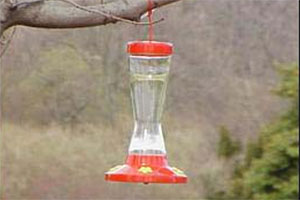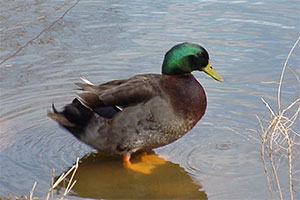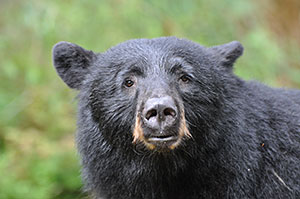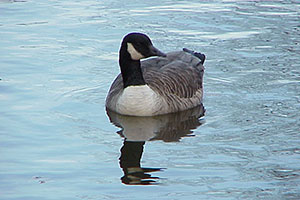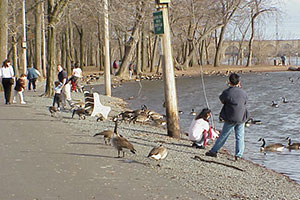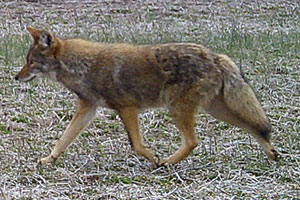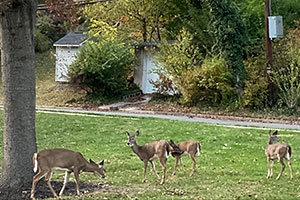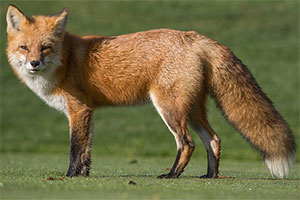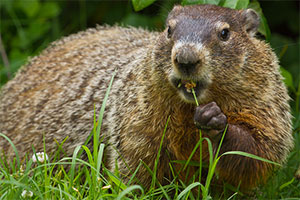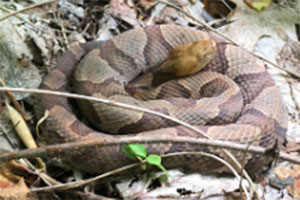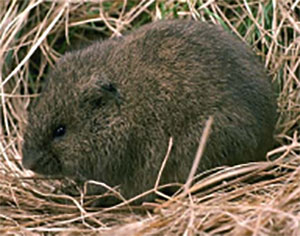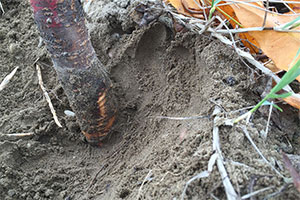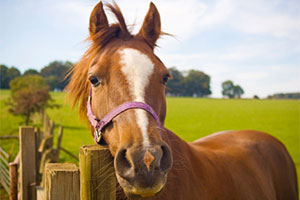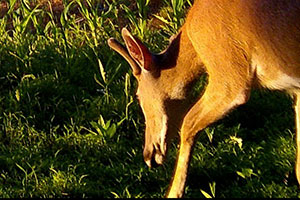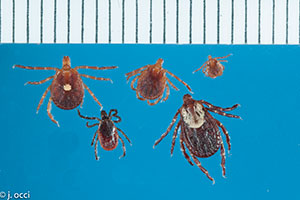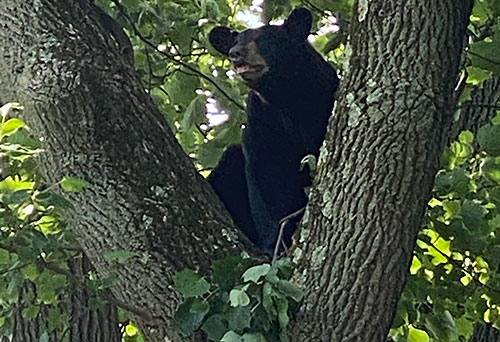
Wildlife management involves striving to achieve a positive balance when it comes to human-wildlife interactions. There are many factors that must be considered, including ensuring healthy wildlife populations, benefits associated with wildlife, damage impacts, and safety concerns. This is especially challenging in the most densely populated state in the U.S. where development has created fragmented landscapes. People and wildlife live in close proximity and interact more than ever before.
This site includes recent research, management successes, and stories of how people interact with, and in some cases, are impacted by, wildlife in New Jersey.
Features

White-Tailed Deer Impacts - Forests, Farms, and Communities
Watch the White-Tailed Deer Impacts - Forests, Farms, and Communities videoThis full-length,10-minute video incorporates all of the stories of the 3 shorter clips below – Crop Damage and Farmers’ Livelihoods; Forests, Open Spaces, and Communities; and Monitoring Deer Numbers. In the full-length feature we follow Bob, a local farmer, for an entire growing season as he loses half of his crop to deer damage. Ecologists tell us about forest research, restoration, and management efforts as they combat high deer numbers and extensive browsing of native plants that has led to invasives taking over the understory and hindering forest regeneration. We also hear how drones have been used to monitor the success of a community-based bowhunting program that has also provided those in need in the community with over 13,000 meals while helping the forest, addressing landscape and agricultural damage, and working to reduce safety concerns such as deer-vehicle collisions.

White-Tailed Deer Impacts and Management
Watch the White-Tailed Deer Impacts and Management videoForest, Open Spaces, and Communities features local researchers discussing how deer seek refuge in neighborhoods and public open spaces, the effects on native plants and forests, and steps communities are taking to reduce deer impacts while helping those in need.

White Tailed Deer Impacts - Crop Damage and Farmers' Livelihoods
Watch the White Tailed Deer Impacts - Crop Damage and Farmers' Livelihoods videoCrop Damage and Farmers’ Livelihoods follows a local farmer through the growing season as they lose 50% of their crop to deer damage. the effects on native plants and forests, and steps communities are taking to reduce deer impacts while helping those in need.

White Tailed Deer Impacts - Monitoring Deer Numbers
Watch the White Tailed Deer Impacts - Monitoring Deer Numbers videoMonitoring Deer Numbers offers a glimpse of how drones are used to track changes in deer numbers before and after the implementation of a management program that reduces negative impacts on farms, forests, and communities.
Management activities to protect the Hutcheson Memorial Forest Center from deer damage began in 2015, with the construction of a fence around 85 acres, followed by the initiation of a community-based, doe-focused, volunteer bowhunting program in 2019. A study involving drone surveys was implemented before the initiation of a community-led management hunt that began in November 2019. Pre- bowhunting drone surveys revealed that density estimates in the area were nearly 150 deer per square mile and greatly exceeded the recommended levels of 10 deer per square mile. Since the management bowhunting program began and deer numbers have decreased, ecologists have observed native vegetation returning to the forest. The program can serve to inform decision-makers and act as a successful model for areas experiencing negative impacts from overabundant deer populations causing damage to local forests, residential areas, and agricultural lands. An additional benefit of the program has been the donation of over 13,000 servings of protein to the Franklin Foodbank to help those in need in the community.
This new fact sheet covers identifying black bear damage, reducing cover and attractants, management techniques, and additional sources of information for farmers.
For additional information on black bear basics, activity reports, safety tips, preventing damage, research, management, and educational resources, visit dep.nj.gov/njfw/bears/
Projects
Research
A group of 27 New Jersey farmers shared stories of struggling with increasing deer numbers and impacts on their farms. Previous studies often focus on direct damage to crops, however, here we offer new information on “hidden costs” that exceeded direct damage, such as crop and field abandonment, modifying rotations, increased use of fertilizers and herbicides, time and money spent on management, and emotional tolls. The conservatively estimated impact of wildlife damage in 2019 was nearly $1.4 million. This includes direct damage to crops ($520,940), “hidden costs” ($755,200), and damage from other wildlife ($97,749). Farmers provided recommendations to policymakers on (1) general deer management, (2) venison donation programs to help those in need, (3) residential deer refuges, (4) management on leased farmland, (5) management of public lands, (6) education and outreach for policymakers and communities, (7) deer fencing, (8) enhancing management through doe-focused hunting, and (9) farmer depredation permits.
Monitoring and Management
This study describes changes in the local white-tailed deer (Odocoileus virginianus) population between 2019 to 2020, before and after implementing a volunteer, doe-focused, community-driven deer management program. Deer per square mile density estimates were taken in the fall and spring at the Rutgers University Hutcheson Memorial Forest Center and surrounding areas of Franklin and Hillsborough Townships in Somerset County. These areas represent a microcosm of the New Jersey landscape consisting of residential neighborhoods, forested and agricultural lands, and open spaces, including the Spooky Brook Golf Course, Colonial Park, Delaware and Raritan Canal, and the Millstone River. Deer-related issues the community faces include damage to native plants, which leads to the spread of invasive species, deer-vehicle collisions, negative impacts on local landscapes and agricultural operations, and residential neighborhoods and public open spaces that serve as deer refuges and present challenges to management. Pre-management hunt surveys revealed density estimates were nearly 150 deer per square mile in the study area and greatly exceeded the recommended levels of 10 deer per square mile. After four years of successful management, more recent surveys have revealed that densities in 2023 are down to approximately 40 deer per square mile within the study area. An updated 2019 to 2023 report is coming soon.
Proper installation of wildlife exclusionary high-tensile woven wire fence provides more than twenty years of highly effective deer depredation prevention. It is estimated that farmer-installed fencing can reduce out-of-pocket costs by approximately 35%. This link provides information on wildlife fencing, a previous study on deer impacts to agriculture, and training videos on proper fence installation.
Fact Sheets
Attracting ruby-throated hummingbirds to your yard covers habitat, migration, reproduction, foraging, native plants to attract birds, and supplemental nectar feeders.
Backyard birdfeeders provides the basics on types of birds and preferred feeder type, placement, maintenance, bird food, and keeping squirrels away.
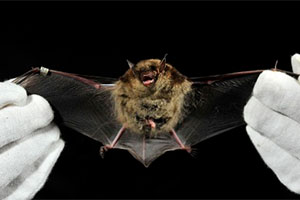
The facts about bats in New Jersey covers bat species, biology, behavior, beneficial services, human-bat interactions, and bat conservation and threats.
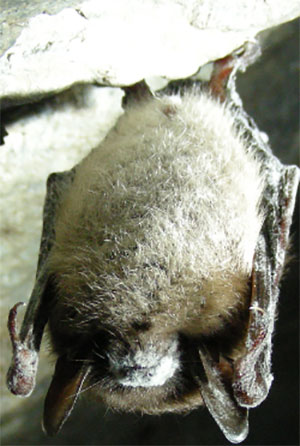
Ecological and economic importance of bats in integrated pest management covers insect pests that bats consume, the economic importance of bats, and bat-friendly agricultural practices.
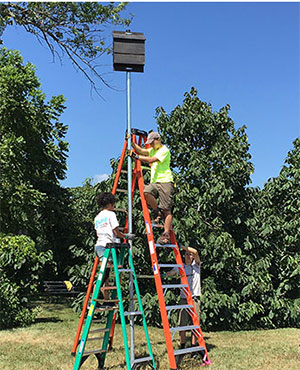
Guidance for siting and installing bat roost boxes covers the basics of why bats use roost boxes, siting, installation, maintenance, and the Rutgers bat house distribution program.
Birding in the Garden State: how to get started covers some basic considerations for those getting into birdwatching, including binoculars, spotting scopes, and identification guides.
Living with black bears in New Jersey covers bear biology, ecological significance, human-bear interactions, and strategies for management.
Canada goose ecology and impacts in New Jersey provides information on goose biology, population, ecological impacts, human health and safety concerns, agricultural damage, and the differences between migratory and resident Canada geese.
Strategies for resident Canada goose control and management in New Jersey discusses the legal status of Canada geese as well as lethal and non-lethal management options.
Coyotes in New Jersey: history, ecology, and management covers coyote biology, ecological significance, hunting and trapping, human-coyote interactions, and management strategies.
An overview of white-tailed deer status and management in New Jersey covers deer biology, overpopulation, ecological impacts, human health and safety concerns, agricultural damage, and management strategies.
Red fox ecology and behavior discusses species identification, habitat, diet, life history, ecological and recreational benefits, nuisance behavior, rabies, and management options.
Ecology and management of the groundhog (Marmota monax) covers groundhog ecology, habitat, behavior, benefits to nature and society, nuisance issues, and management strategies.
Northern copperheads in New Jersey covers habitat and distribution, identification, conservation status, life history, seasonal activity, reproduction, prey, foraging, and human safety.
Vole ecology and management provides information on species identification, habitat, food, life history, and controlling damage.
Voles in the Orchard covers species identification, predicting the extent of damage, management techniques, and a summary of commercially available rodenticides.
Rabies: what you should know for your pets and livestock discusses how rabies is transmitted, animals that can get it, symptoms and prevention, and what to do if you suspect an animal or person is bit by a rabid animal.
Regulations governing the management of New Jersey Wildlife provides information on common species causing damage, state and federal wildlife agencies, and definitions of migratory, game, non-game, threatened, and endangered species.
Lone Star Ticks in New Jersey: risk, ecology, and identification discusses the history, distribution, life cycle, identification, medical importance, prevention, control, of the Lone Star Tick, and what to do if you are bitten.


